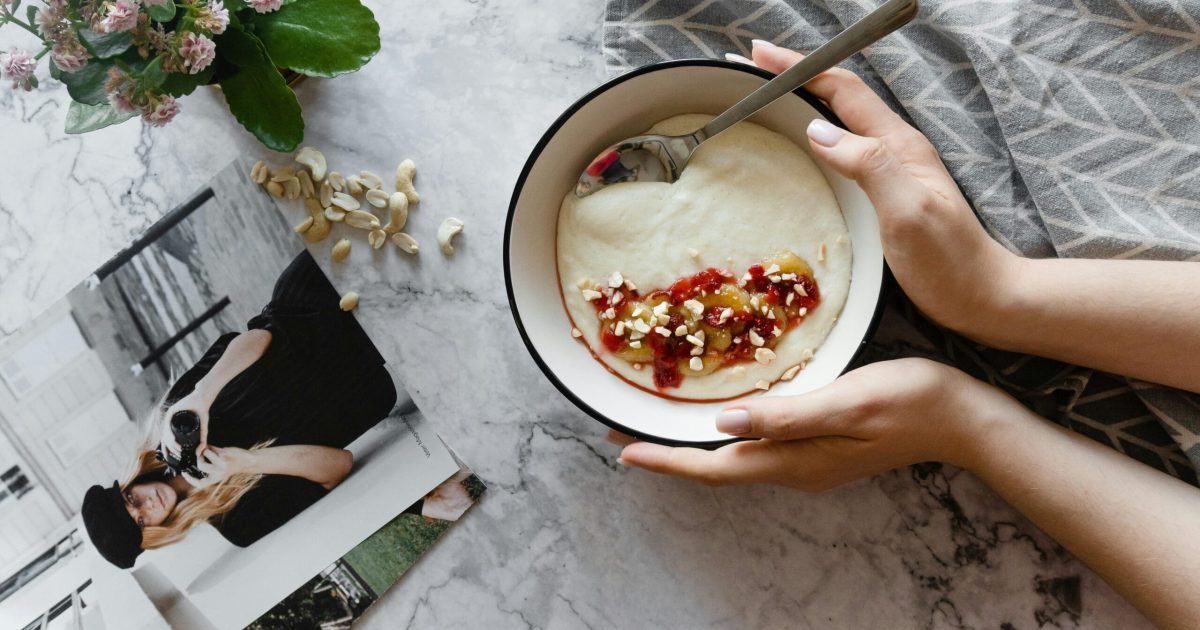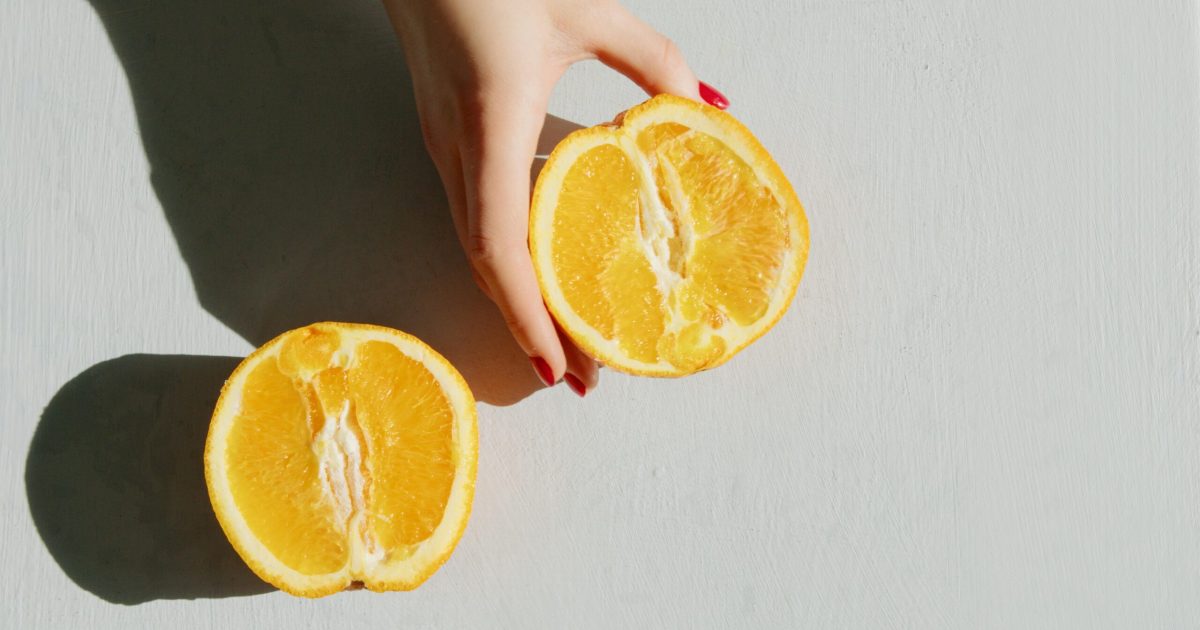After spending nearly six years experimenting with different diets and learning about nutrition through personal experience, I’ve discovered something important: the diet culture that surrounds us often does more harm than good. Through my own trials, errors, and eventual successes with finding a balanced approach to eating, I’ve gained insights that I wish someone had shared with me years ago.
I can bet that at some point in your life, you’ve tried one of those restrictive diets, maybe keto, intermittent fasting, calorie counting, or a calorie deficit, but found them exhausting, unsustainable, or even harmful to your relationship with food. Or maybe you’ve tried all of them and didn’t find them effective.
I completely get it. I’ve personally tried almost every diet out there. Some worked surprisingly well, but none were sustainable. Either they weren’t meant for long-term health or they simply weren’t manageable. Let’s be real: no one enjoys restriction forever. You can tolerate it for a while, but eventually, it feels suffocating. That’s why I want to share the most effective things I’ve learned on my weight loss aka self-improvement journey. These aren’t just about losing weight – they help with overall well-being and make transitioning to a healthier lifestyle much easier.
Table of Contents
1. It All Starts With a Mindset Shift
As a psychology graduate and someone deeply invested in self-improvement, I’ve realized that everything starts with a thought.
If you struggle with overthinking, it usually begins with one negative thought that you feed until it spirals. The same principle applies to your approach to food. If your mindset is, I need to eat restrictive meals so I can lose weight and look good for others, you’re setting yourself up for frustration. But if you shift that thought to, I want to eat healthily so I can stay strong for myself and my loved ones, everything changes.
Reflection Question: What’s your current motivation for wanting to change your relationship with food? Take a moment to write it down and consider if it’s coming from a place of self-love or self-criticism.
2. Slow Progress Over Quick Fixes

One of the biggest mistakes people make is expecting drastic changes overnight. You decide to eat healthy for a week and expect to feel like the healthiest version of yourself instantly. But real change doesn’t work that way.
Many diets promise rapid weight loss in a short time. Do some deliver? A few, yes. But is it sustainable? Absolutely not. And more often than not, quick fixes come with side effects.
Speaking from experience, the results that lasted for me were the ones that took months to develop. I didn’t set a deadline like, I must lose 5 kgs by next month. Instead, I gave my body time to adjust and adapt. And that patience made all the difference.
Reflection Question: What’s a realistic timeline for your health journey that feels sustainable and kind to your body?
3. Tiny Tweaks for a Better You
Massive overnight changes never worked for me. What did work? Small, consistent habits.
Step 1: Swap Your Snacks
I used to be a junk food lover. The first change I made was swapping unhealthy snacks for nutritious alternatives. I replaced chips and fast food with nuts and fruits. The challenge? I never liked fruits. So I experimented. I tried different ones until I found a few I enjoyed, then rotated them daily. Now, eating at least one fruit a day and a handful of nuts has become second nature.
Step 2: Master Portion Control
When I first started my journey, portion control felt overwhelming. I used to think it meant measuring every single bite or weighing all my food – but that’s not sustainable at all! What I’ve learned is that portion control isn’t about restriction; it’s about finding the right balance that works for your body.
Here’s the thing: you don’t need complicated calculations or strict measuring to get portion control right. I started with a simple visual approach that anyone can follow:
The Balanced Plate Method:





The Game-Changer That Simplified Portion Control
Discovering “Portion Perfection” by Amanda Clark completely changed the way I approach portion sizes. This isn’t just another diet book – it’s a visual guide that finally made portion control click for me.
What I love about it is how it shows exactly what your plate should look like for different calorie needs. Instead of obsessing over measurements, you can simply look at the pictures and replicate them. It’s like having a friendly dietitian guiding you through each meal. Grab your copy here!
Remember: Portion control isn’t about perfection – it’s about progress. Start with these basic guidelines and adjust based on how your body feels. Some days you might need more, others less, and that’s completely okay!
4. Listen to Your Body: Trust Your Hunger Cues

Dieting teaches us to ignore hunger cues—to drink water instead of eating, suppress cravings, and follow external rules. I had to unlearn this. Intuitive eating became my turning point.
Instead of obsessing over macros or calories, I started asking myself:
- Am I actually hungry, or am I just eating out of habit or boredom?
- What foods make me feel energized and satisfied?
- How does my body feel after eating certain foods?
By listening to my body instead of food rules, I realized that balance, not restriction, was the key to feeling my best.
Handling Emotional Eating:
One crucial aspect of listening to your body is understanding emotional eating. When you feel the urge to eat:
- Pause and take three deep breaths
- Ask yourself what emotion you’re feeling
- Consider if food will actually address that emotion
- Choose an alternative coping mechanism if needed (walking, journaling, calling a friend)
5. Ditch the All-or-Nothing Mentality
One of the biggest lies diet culture tells us is that we’re either “on track” or “off track.” This mindset kept me trapped in a cycle of restriction → bingeing → guilt → repeat.
But here’s the truth: No single meal or day of eating ruins your progress.
Once I let go of the idea that certain foods were “bad,” I stopped overindulging just because I thought I had already “messed up.” Now, I enjoy everything in moderation—without guilt, without panic, and without self-punishment.
6. Move Your Body for Joy, Not Punishment
For years, I exercised to “burn off” what I ate. Workouts felt like punishment. Breaking free from diet culture meant redefining my relationship with movement.
Now, I move in ways that feel good—whether it’s dancing in my living room, going for a long walk, or practicing yoga. Exercise is no longer about shrinking myself but about feeling strong, energized, and happy.
7. Surround Yourself with the Right Information

Breaking free from diet culture means being selective about whose advice you follow. Instead of listening to influencers promoting quick fixes and restrictions, I started learning from people who focus on understanding how our body actually works.
One of the most transformative discoveries in my journey was learning about blood sugar management from Jessie Inchauspé, aka the Glucose Goddess. Her book, The Glucose Goddess Method, completely changed my approach to eating. Instead of focusing on restrictive diets, she explains how our blood sugar levels affect everything from our mood and energy to our weight and food cravings.
When your blood sugar rapidly rises and crashes (like after eating a sugary breakfast), it can lead to mood swings, energy dips, and intense cravings. By understanding and managing these glucose spikes, you naturally make better food choices without feeling restricted.
This is exactly why I switched to savory breakfasts and started implementing simple habits like taking a short walk after meals or adding vegetables to my plate first. I picked up these small hacks from her book, and these small changes, based on understanding blood sugar’s role in our body, have made a huge difference in how I feel both mentally and physically.
If you’re ready to understand your body better and make lasting changes without restrictive dieting, I highly recommend checking out Glucose Goddess Method. Remember, investing in understanding your body is truly the best investment you can make. The knowledge you gain becomes a permanent tool in your journey toward better health.
8. Detox Your Social Media Feed
Social media played a huge role in my diet culture struggles. The constant posts about “clean eating,” “cheat days,” and “what I eat in a day” only fueled my obsession. So, I did a social media cleanse:



This one change drastically improved my mental health and self-image.
Final Thoughts
Food freedom isn’t about eating anything, anytime, with no regard for health. It’s about:
- Letting go of guilt around food.
- Listening to your body instead of external rules.
- Enjoying food as nourishment, pleasure, and connection.
- Knowing that your worth isn’t tied to your weight.
If you’ve spent years trapped in diet culture, know this: You don’t have to live that way forever. Food freedom is possible—and trust me, it’s worth it.
Resources to Support Your Journey
- Anti-Diet by Christy Harrison: A powerful takedown of diet culture, this book exposes the harm of restrictive eating and teaches you how to reclaim a guilt-free, intuitive relationship with food.
- Portion Perfection by Amanda Clark: A visual guide that simplifies portion control, showing exactly what balanced meals look like for different calorie needs, without the need for obsessive measuring.
- Glucose Goddess Method: The 4-Week Guide by Jessie Inchauspe: A science-backed, easy-to-follow approach to stabilizing blood sugar levels through small, practical food habits and a proper guide with incredibly healthy and delicious recipes. 10/10 for its visual graphics! Plus, it offers a sustainable way to manage weight without restrictive dieting – helping you feel full, satisfied, and in control of cravings.
FAQs:
What does it mean to break free from diet culture?
Breaking free from diet culture means letting go of restrictive eating patterns and developing a healthier relationship with food. It involves shifting away from counting calories, following strict food rules, and experiencing food guilt, towards a more balanced and intuitive approach to eating that focuses on nourishment, satisfaction, and overall well-being.
Can I maintain a healthy weight without dieting?
Yes, you can maintain a healthy weight without restrictive dieting. By focusing on sustainable habits like portion awareness, listening to your body’s hunger cues, eating nutrient-dense foods, and moving your body in enjoyable ways, you can achieve and maintain a healthy weight without the mental burden of dieting.
How do I handle cravings without restricting myself?
Instead of fighting cravings, try to understand them. Practice portion awareness, allow yourself to enjoy foods in moderation, and focus on adding nutritious options to your meals rather than restricting certain foods completely.
What role does blood sugar play in managing hunger and cravings?
Blood sugar levels significantly impact hunger, cravings, and energy levels. Maintaining stable blood sugar through balanced meals, including protein, fiber, and healthy fats, can help reduce intense cravings and energy crashes. Simple habits like eating vegetables first or taking a short walk after meals can help manage blood sugar naturally.
How can I start practicing intuitive eating?
Start by paying attention to your hunger and fullness cues. Before eating, ask yourself if you’re physically hungry or eating for other reasons. During meals, eat slowly and check in with your body’s signals.
